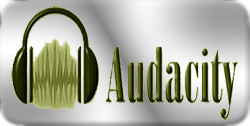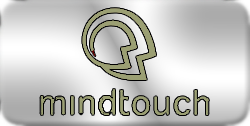Facebook - Eden Leone
Throwing a sheep, tending a green patch, or adding a piece of flair have helped make the social utility site, Facebook, incredibly popular. This popularity has led many in academia to consider using Facebook as a pedagogical tool for teaching students about technological literacies. Facebook’s potential usefulness, however, comes with some potential problems. Facebook is first-and-foremost a social networking tool, so the possibility of inappropriate relationships forming between teachers and students is real, and there are security issues to consider as well whenever we take class work out onto the Web. Nevertheless, it seems prudent for teachers to at least consider the potential benefits of Facebook’s popularity and playfulness for the teaching and practicing of emerging communication literacies in a technological world.
The notion of using Facebook or other social networking sites as tools for teaching and learning is not without precedent. For example, Randy Turner, a junior high school teacher in Joplin, Missouri, states that having access to MySpace provides an opportunity to “open the lines of communication” with his students (Simon, 2008). Interacting with students, either by MySpace or Facebook, provides an opportunity to connect. Awkward academic barriers can be broken down through the playfulness inherent in Facebook. For example, throwing a “sheep” at another Facebook user is an unexpected gesture that usually provokes a response, one that opens up communication. On a more practical level, many teachers are using Facebook as an alternative to school email to discuss school matters, thinking that students are more likely to check their Facebook accounts over their school ones. Speaking from personal experience, I first became acquainted with Facebook because it was a graduate course requirement. Since I had not used it before, I did not have any an attachment of it being “my space.” It was just another means to communicate with my professor and fellow students. Facebook provided a more personal touch to my communications, such as posting tag photos and enabling me to paste news URLs to my “wall” or others. Despite limited class time, I got to know the members of my class through viewing their Facebook pages.
While Facebook can promote communication and interaction between teachers and students, not surprisingly many school administrators “fear the social-networking sites are breeding inappropriate relationships between teachers and students” (Simon, 2008). However, many teachers have developed their own “class pages hosted by their school districts” (Simon, 2008). This helps resolve some of “Facebook’s ick factor” that can result when students or teachers include too much personal information on their profile page (Dumenco, 2008). The impulse to look at the information unrelated to education is a significant concern, as the recent Wired.com article, “Facebook: Too Creepy, Childish for the Workplace,” illustrates.
The security issues associated with the availability of information on Facebook also concerns many because the “social norms of social networking are still in flux” (Dumenco, 2008). The status update, a fun way of telling people what you are doing at the moment, can create strife between friends and colleagues. For example, if you update your status to say that you’ve just returned home from your boss’s dinner party and certain of your coworkers were not invited, chances are you won’t receive a warm welcome around the water cooler. This “lull in security” can become problematic in an educational setting. Unless the limited access feature is enabled any student that is friends with you can access your information. In addition, as teachers we must remember that we are not friends with our students per se; rather, we must seek to promote congeniality with students in an effort to develop a rapport that fosters good instruction.
While the concerns addressed here are legitimate and certainly worthy of careful consideration as teachers explore the pedagogical potential of emerging communication technologies, it is important to remember that our students are going to continue using them whether we use them in our courses or not. Keeping this in mind, perhaps it makes sense to introduce a social networking tool like Facebook into a writing or communication curriculum. The security and privacy concerns associated with them are real, and working with tools like this in the classroom setting provides an opportunity for students to develop a critical understanding of these issues. Facebook, and other Web 2.0 technologies such as Goggle Docs, Wikis, Podcasts, and YackPack, provide a useful and fun space for teachers to communicate with students – and for students to communicate with each other – about their course work. Perhaps more importantly, however, it provides an opportunity for students to develop the critical literacies necessary for using these powerful networking tools in appropriate and safe ways.
References
Dumenco, S. (2008). Facebook: Too creepy, childish for the workplace. Wired. Retrieved from www.wired.com/print/culture/lifestyle/news/.
Simon, M. (2008). Online Student-Teacher Friendships Can Be Tricky. cnn.com. Retrieved online from www.cnn.com/2008/TECH/08/12/studentsteachers.online/index.html.





